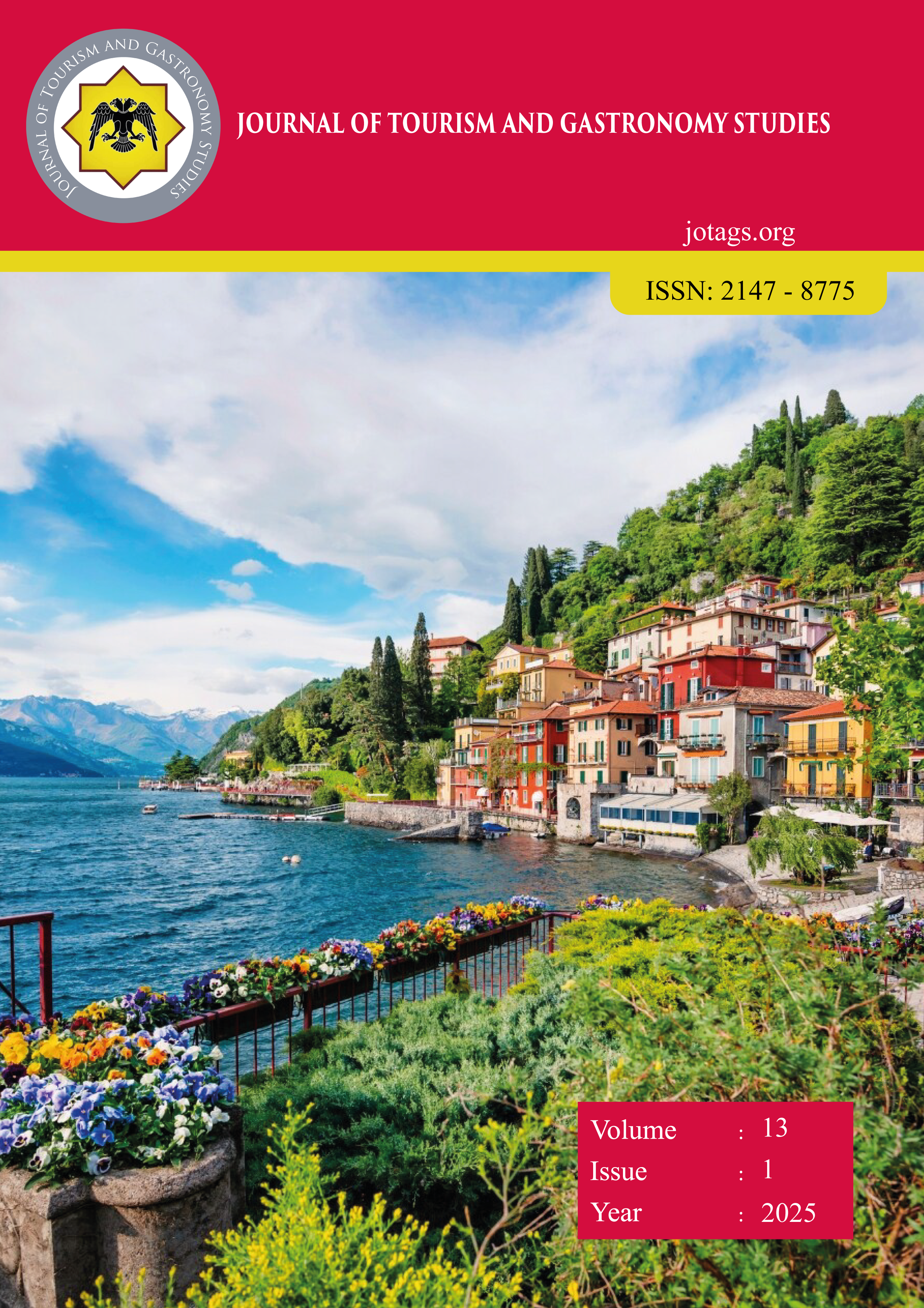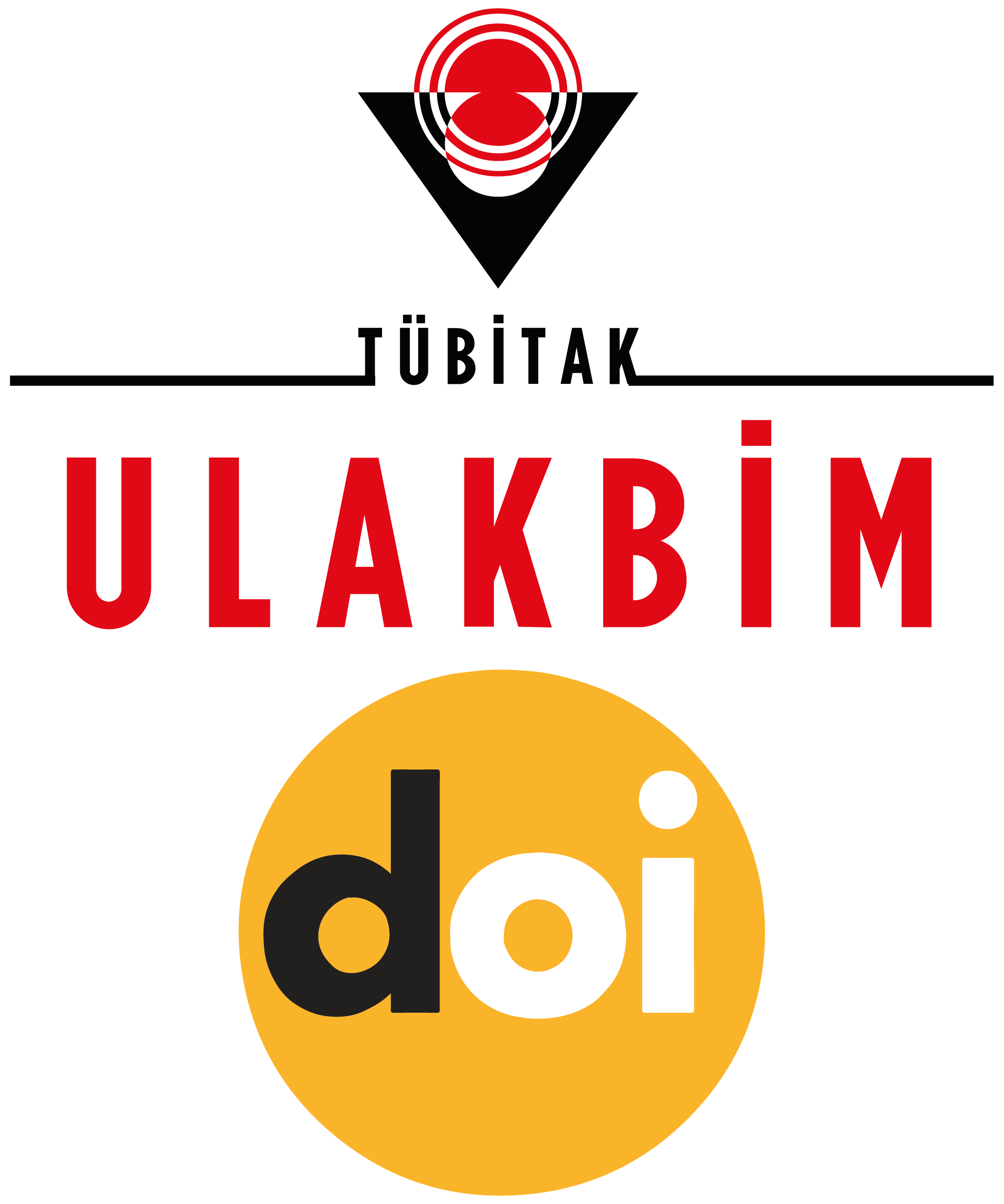Mürdümük (Lathyrus sativus L.) Bitkisinin Türk Mutfağında Kullanımı Üzerine Bir Araştırma (A Research on the Use of Grass Pea (Lathyrus sativus L.) Plant in Turkish Cuisine)
DOI:
https://doi.org/10.21325/jotags.2025.1558Keywords:
Grass pea, Lathyrus sativus L., Legume, Turkish cuisine, ArchaeobotanyAbstract
One of the biggest environmental, economic and social problems in the world is climate change. In recent years, factors such as decreasing water availability and increasing temperatures due to climate change have caused a decrease in crop yields in agriculture. For these reasons, it has become important to investigate the culinary uses of legumes that are resistant to harsh conditions and are not widely known. Able to grow in unfavorable soil and climate conditions, grass pea (Lathyrus sativus) is a legume that has been grown in Anatolian lands since 8000 BC. This study aims to identify dishes made with grass pea in Turkish cuisine and to develop standard recipes. In the first stage of the study, written sources about the grass pea were examined and data were collected through document analysis. The grass pea used in the study were cultivated by the author. Then, standard recipes for grass pea soup, stuffed grass pea and pava (grass pea paste), which were found to be made with grass pea in Turkish cuisine, were developed. It is recommended that future studies investigate the use of grass pea in different recipes.
References
Almeida, N. F., Rubiales, D. & Vaz Patto, M. C. (2015). Grass Pea. In: De Ron, A. M. (Ed.) Grain Legumes, Springer, New York, pp. 251-265. https://doi.org/10.1007/978-1-4939-2797-5
Arslan, M. (2017). Diversity for vitamin and amino acid content in grass pea (Lathyrus sativus L.). Legume Research-An International Journal, 40(5), 803-810. https://doi.org/10.18805/LR-369
Barone, M. & Tulumello, R. (2020). Lathyrus sativus and Nutrition: Traditional food Products, Chemistry and Safety Issues (62 p.) Springer, https://doi.org/10.1007/978-3-030-59091-8
Campbell, C. G. (1997). Grass Pea, Lathyrus sativus L. (Vol. 18). Bioversity International.
Das, A., Parihar, A. K., Barpete, S., Kumar, S. & Gupta, S. (2021). Current perspectives on reducing the β-ODAP content and improving potential agronomic traits in grass pea (Lathyrus sativus L.). Frontiers in Plant Science, 12, 703275. https://doi.org/10.3389/fpls.2021.703275
Eren, E. & Çelik, H. T. (2023). Anadolu coğrafyasında neolitik dönem arkeobotanik buluntuları. Karadeniz Uluslararası Bilimsel Dergi, (58), 22-40. https://doi.org/10.17498/kdeniz.1299743
Fairbairn, A., Asouti, E., Near, J. & Martinoli, D. (2002). Macro-botanical evidence for plant use at Neolithic Çatalhöyük south-central Anatolia, Turkey. Vegetation History and Archaeobotany, 11, 41-54. https://doi.org/10.1007/s003340200005
FAO, IFAD, UNICEF, WFP & WHO. (2023). The State of Food Security and Nutrition in the World 2023. Urbanization, agrifood systems transformation and healthy diets across the rural–urban continuum. Rome, FAO. https://doi.org/10.4060/cc3017en
Fidanoğlu, İ. & Doğan, H. (2020). Datça’dan Betçe’ye 7: Hayatın İmbiğinden Betçe Manileri. https://dagakactim.blogspot.com/2020/04/datcadan-betceye-7.html adresinden 02.08.2024 tarihinde erişilmiştir.
Fratianni, F., Cardinale, F., Cozzolino, A., Granese, T., Albanese, D., Di Matteo, M., Zaccardelli, M., Coppola, R. & Nazzaro, F. (2014). Polyphenol composition and antioxidant activity of different grass pea (Lathyrus sativus), lentils (Lens culinaris), and chickpea (Cicer arietinum) ecotypes of the Campania region (Southern Italy). Journal of Functional Foods, 7, 551-557. https://doi.org/10.1016/j.jff.2013.12.030
Gonçalves, L., Rubiales, D., Bronze, M. R. & Vaz Patto, M. C. (2022). Grass pea (Lathyrus sativus L.) - A sustainable and resilient answer to climate challenges. Agronomy, 12(6), 1324. https://doi.org/10.3390/agronomy12061324
Kadıoğlu, M., Ünal, Y., İlhan, A. & Yürük, C. (2017). Türkiye’de iklim değişikliği ve tarımda sürdürülebilirlik, Türkiye Gıda ve İçecek Sanayi Dernekler Federasyonu Yayını (168 s.), İstanbul, Türkiye.
Kalaycı Durdu, B. & Budakoğlu, F. E. (2016). Muğla Mutfağı (143 s.) İl Kültür ve Turizm Müdürlüğü, Muğla, Türkiye.
Khandare, A. L., Babu, J. J., Ankulu, M., Aparna, N., Shirfule, A. & Rao, G. S. (2014). Grass pea consumption & present scenario of neurolathyrism in Maharashtra State of India. Indian Journal of Medical Research, 140(1), 96-101.
Kislev, M. E. (1989). Origins of the cultivation of Lathyrus sativus and L. cicera (Fabaceae). Economic Botany, 43(2), 262-270.
Kumar, S., Gupta, P., Barpete, S., Sarker, A., Amri, A., Mathur, P. N. & Baum, M. (2013). Grass Pea. In: Singh, M., Upadhyaya, H. D., Singh Bisht, I. (Eds.) Genetic and Genomic Resources of Grain Legume Improvement. Elsevier, London and Walthan, pp 269–292. https://doi.org/10.1016/b978-0-12-397935-3.00011-6
Kutlu, L. & Çakır, E. A. (2021). Batman/Beşiri Çemialo Sırtı’nda arkeobotanik çalışmalar. Düzce Üniversitesi Bilim ve Teknoloji Dergisi, 9(1), 215-230. https://doi.org/10.29130/dubited.773005
Kutlu, L., Erim Özdoğan, A. & Altundağ Çakır, E. (2018). Archaeobotanical studies at Sumaki Höyük (Batman, Turkey) in 2014. Eurasian Journal of Forest Science, 6(2), 26-34. https://doi.org/10.31195/ejejfs.410656
Lambein, F., Travella, S., Kuo, Y. H., Van Montagu, M. & Heijde, M. (2019). Grass pea (Lathyrus sativus L.): orphan crop, nutraceutical or just plain food?. Planta, 250, 821-838. https://doi.org/10.1007/s00425-018-03084-0
Ortiz-Bobea, A., Ault, T. R., Carrillo, C. M., Chambers, R. G. & Lobell, D. B. (2021). Anthropogenic climate change has slowed global agricultural productivity growth. Nature Climate Change, 11(4), 306-312Uyar, Ö. Y., & Turoglu, H. (2023). Aşağı Pınar (Kırklareli-Türkiye) tarih öncesi yerleşiminin coğrafi veriler ve CBS teknolojileriyle yaşam çevresi analizi. Jeomorfolojik Araştırmalar Dergisi, (10), 78-90. https://doi.org/10.46453/jader.1207499
Quintieri, L., Nitride, C., De Angelis, E., Lamonaca, A., Pilolli, R., Russo, F. & Monaci, L. (2023). Alternative protein sources and novel foods: benefits, food applications and safety issues. Nutrients, 15(6), 1509. https://doi.org/10.3390/nu15061509
Yıldırım, A. & Şimşek, H. (2021). Sosyal Bilimlerde Araştırma Yöntemleri. Ankara: Seçkin Yayıncılık.
Downloads
Published
How to Cite
Issue
Section
License
Copyright (c) 2025 Journal of Tourism & Gastronomy Studies

This work is licensed under a Creative Commons Attribution-NonCommercial 4.0 International License.








